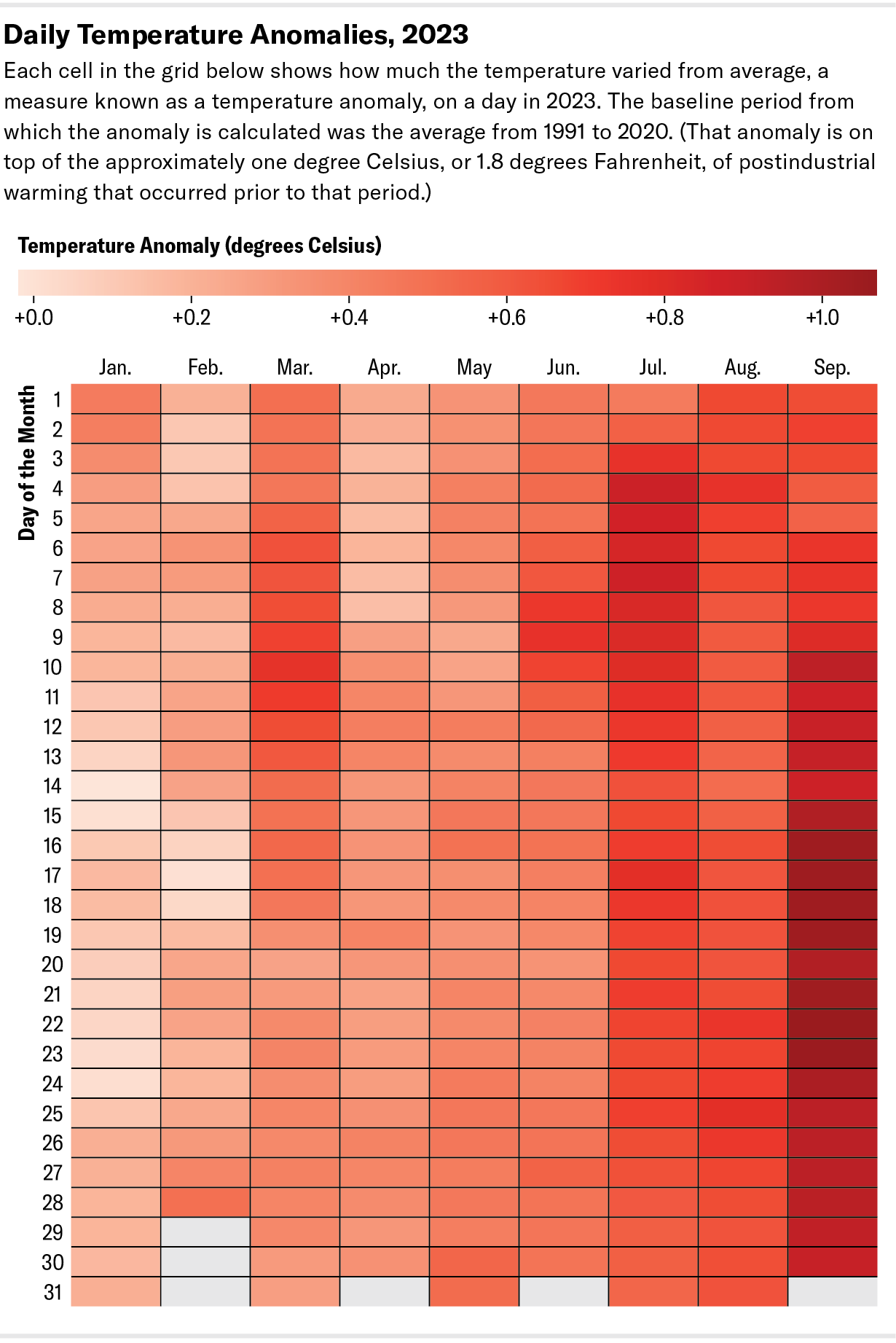Bright sunshine coupled with temperatures in the high 90s this late-afternoon Friday here in California’s Central Valley as we’re apparently experiencing a seemingly out-of-the-blue shot of summer for the next couple of days — after a mild early autumn the last few weeks we were jolted back into hot-heat yesterday (temps in the low 90s) with the return of summertime-type weather.
Although still a bit on the cool side earlier this morning, taking my daughter’s Bassett hound/Grayhound mix, Leroy, on our daily walk almost was a showdown with the gathering heat — we finished just in the nick, beating the crunch of the worse of the day’s swelter. We had a good walk, however. (Enjoy more of Leroy and our walks here).
Despite our weather in my area lately being really, really nice the last two/three months, the overall overflow from last month’s environmental impact is a cause of climate-change alarm — weird-ass data indicates September was the hottest month in like forever.
Even experts are taken aback:
The September data shows an acceleration in the warming trend that rang alarm bells this summer as the planet’s temperature reached its warmest level in modern records and probably in thousands of years.
Climate scientist Zeke Hausfather called the September warming “absolutely gobsmackingly bananas.”
Really, really ‘bananas,’ too, is this heat-temp chart for the year so far — hot-shit-on-a-stick:
 (Illustration found here.)
(Illustration found here.)
How gazes October? All the deep-burgundy color spots, pulsating from pink to blood red, showcase the hottest summer in also like forever, the above graph of temps wastes no space — June through August topped historical records by a ‘bananas‘ margin (16.8 degrees Celsius (62.2F) – 0.66C above average). Of course, the way-short, long-run is catastrophic climate change (ABC News): ‘Globally, 2023 has already featured the hottest summer on record, multiple hottest months on record, including July and August, and the hottest day recorded on Earth for several days in a row at the beginning of July. The last time Earth recorded a colder-than-average year was in 1976.‘
The plotline lives in the numbers with a scary narrative — details on the September heat via Scientific American from Wednesday:
And the steady heat building this year could make 2023 not only the hottest year on record but the first to exceed 1.5 degrees Celsius (2.7 degrees Fahrenheit) above preindustrial temperatures, or the stable climate that preceded the massive release of greenhouse gases into the atmosphere from burning fossil fuels. Under the landmark Paris climate accord, nations have pledged to try to keep global warming under that threshold. “It’s very worrying,” says Kate Marvel, a senior climate scientist at Project Drawdown, a nonprofit organization that develops roadmaps for climate solutions.
According to data kept by the Japan Meteorological Agency, this September was about 0.5 degree C (0.9 degree F) hotter than the previous hottest September in 2020. It was also about 0.2 degree C (0.4 degree F) warmer than the previous record high temperature anomaly—a measure of how much warmer or colder a given time period is, compared with the average—which had been set in February 2016 during a blockbuster El Niño.
[…]
Two main factors are at play in driving temperatures to such extremes: their inexorable increase from burning fossil fuels and an El Niño event that is shaping up to be a strong one. El Niño is a part of a natural climate cycle that features a tongue of unusually warm waters across the eastern Pacific Ocean. Those waters release heat into the atmosphere and can cause a cascade of changes to key atmospheric circulation patterns linked to the weather around the world.
Heat waves have broken records all over the globe during the past few months, including prolonged events called heat domes that plagued the southern stretch of the U.S. and parts of the Mediterranean. Summerlike temperatures were even felt in South America during the Southern Hemisphere’s winter. Two of the heat waves—one in the U.S. Southwest and one in Europe—were found to be virtually impossible without global warming. And summerlike heat has continued in places into October.
[…]
Beyond potentially becoming the hottest year on record, 2023 could also be the first year to top 1.5 degrees C above preindustrial temperatures (some individual months have already passed that threshold). But even if that happens, all hope is not lost for meeting the Paris accord goals. That threshold is measured as an average of several decades, and climate scientists have long expected that a single year would pass that mark a decade or so before the world could be considered permanently above that limit. “There is still time to limit global warming to 1.5 degrees,” Marvel says.(Kate Marvel, a senior climate scientist at Project Drawdown, a nonprofit organization that develops roadmaps for climate solutions) “It is going to be incredibly difficult. The pathways are narrowing.”
But this year should be considered a warning of the future we face if we don’t take rapid, ambitious action. “This is what the world looks like when it’s 1.5 degrees hotter in a year, and it’s terrible,” she says. When the world does permanently pass 1.5 degrees C, the climate anomalies for individual years will reach higher than that mark.
Ugly might be the word for what it looks like if shit continues unabated.
And just how odd is our current circumstance? A whisper:
"Earth’s heat spike is so unusual, your chance of winning the Powerball is 1,400X greater" by @WeatherProf Jeff Berardelli for @WFLA News Tampa: https://t.co/3EJeaXV55T
— Prof Michael E. Mann (@MichaelEMann) October 6, 2023
The way we calculate the odds of a rare heat event occurring is based on historical temperature data. Historical being the keyword, but there is no historical precedent in our record for how warm the Earth is now. That’s because our climate has changed dramatically in the past few decades due to the heat-trapping effect of substantial greenhouse gas emissions from the burning of fossil fuels.
So statistically, it makes the possibility of achieving today’s heat impossible in the pre-heated climate of a century ago — and virtually impossible even in the semi-heated climate of a few decades ago. That’s why statistical analysis generates numbers like 1-in-400 billion. It means September heat like this past month simply wasn’t possible in the 1980s and 1990s.
Enough said, maybe.
And to hot-wire us out, Glenn Frey presents a musical given:
Hot enough yet, or not, here we are once again…
 (Illustration out front: MC Escher’s woodcut, ‘Tower of Babel,’ and found here.)
(Illustration out front: MC Escher’s woodcut, ‘Tower of Babel,’ and found here.)